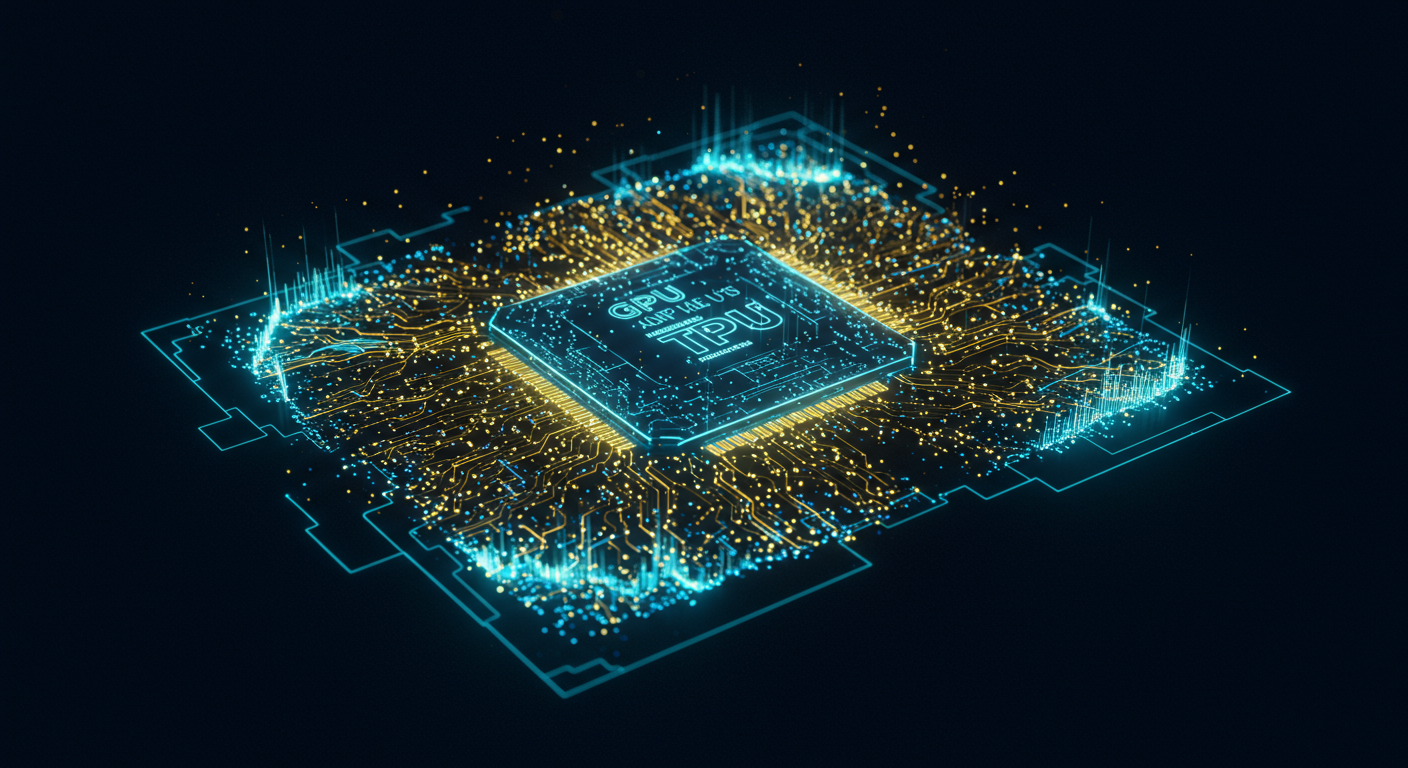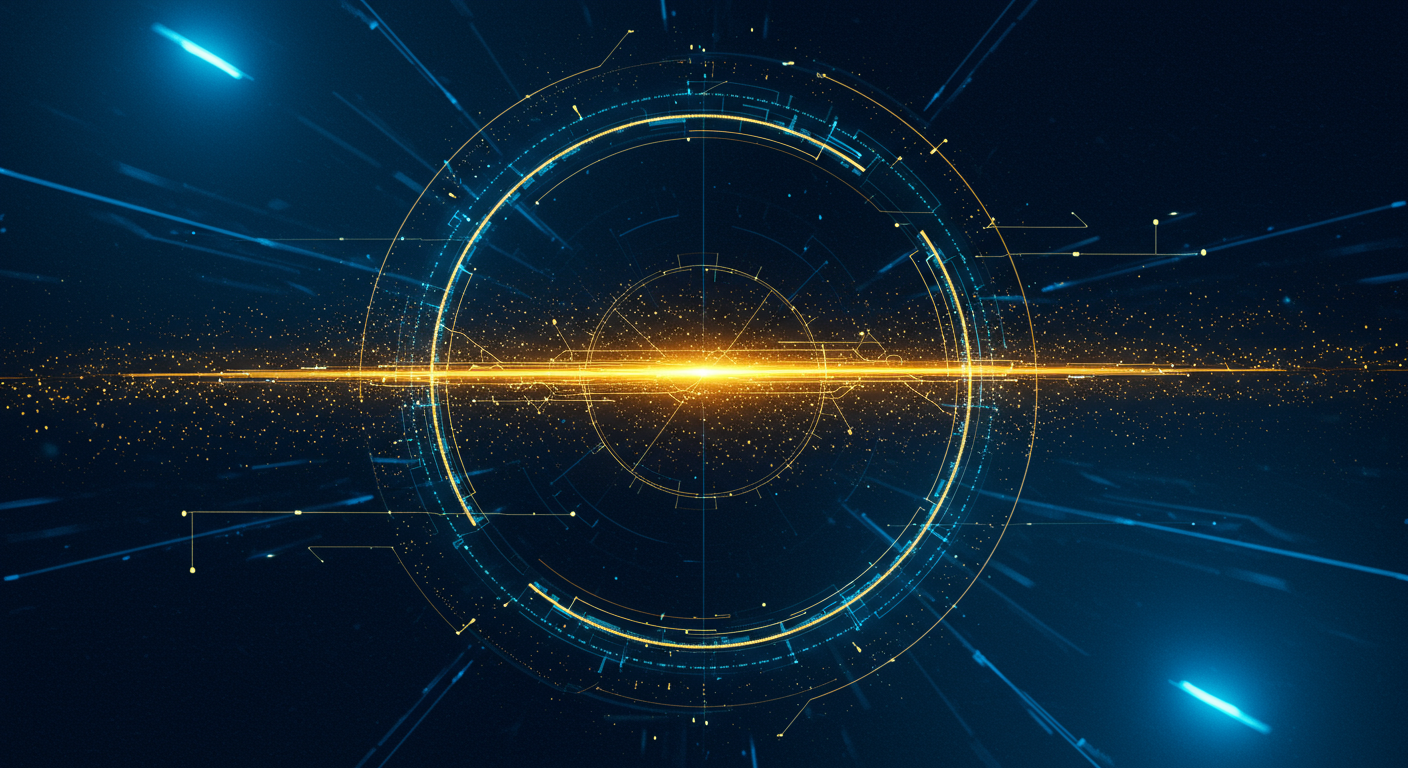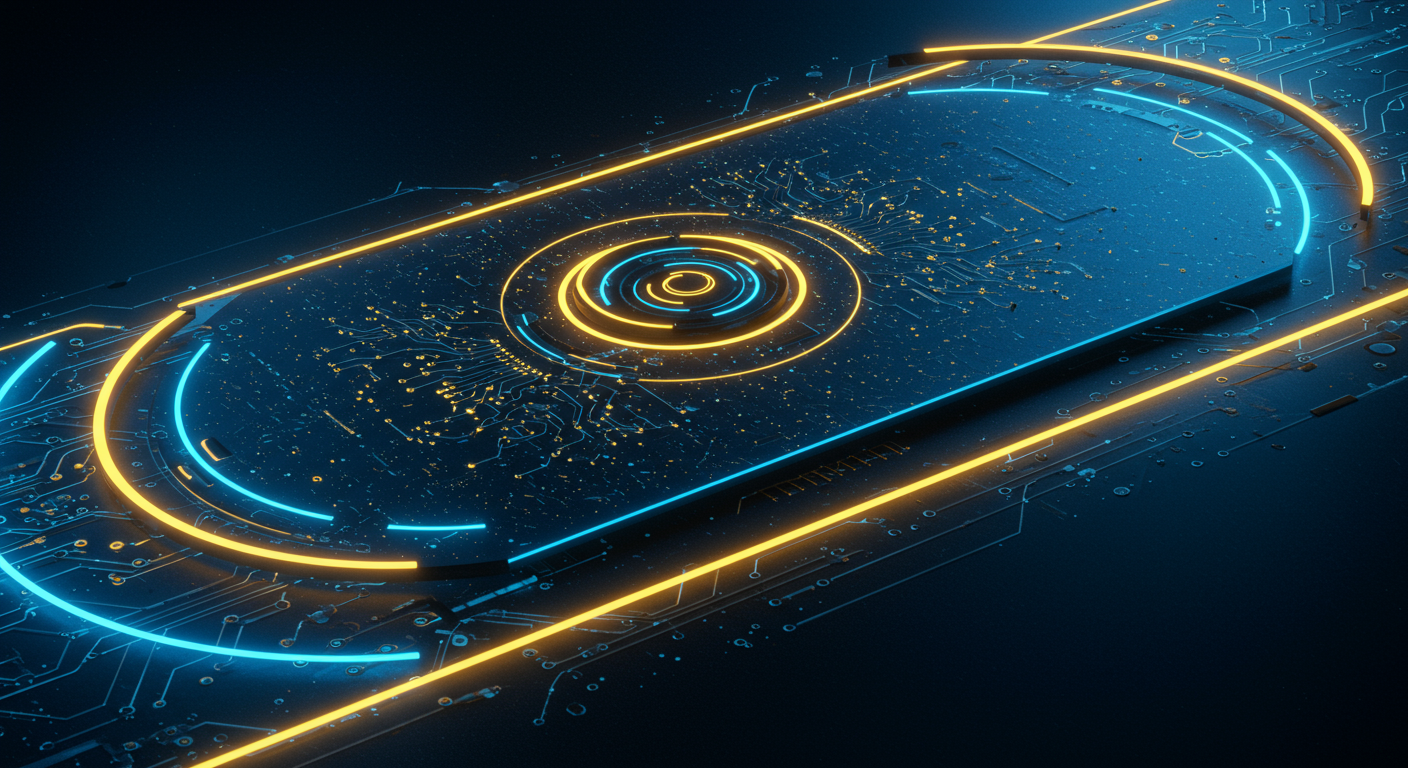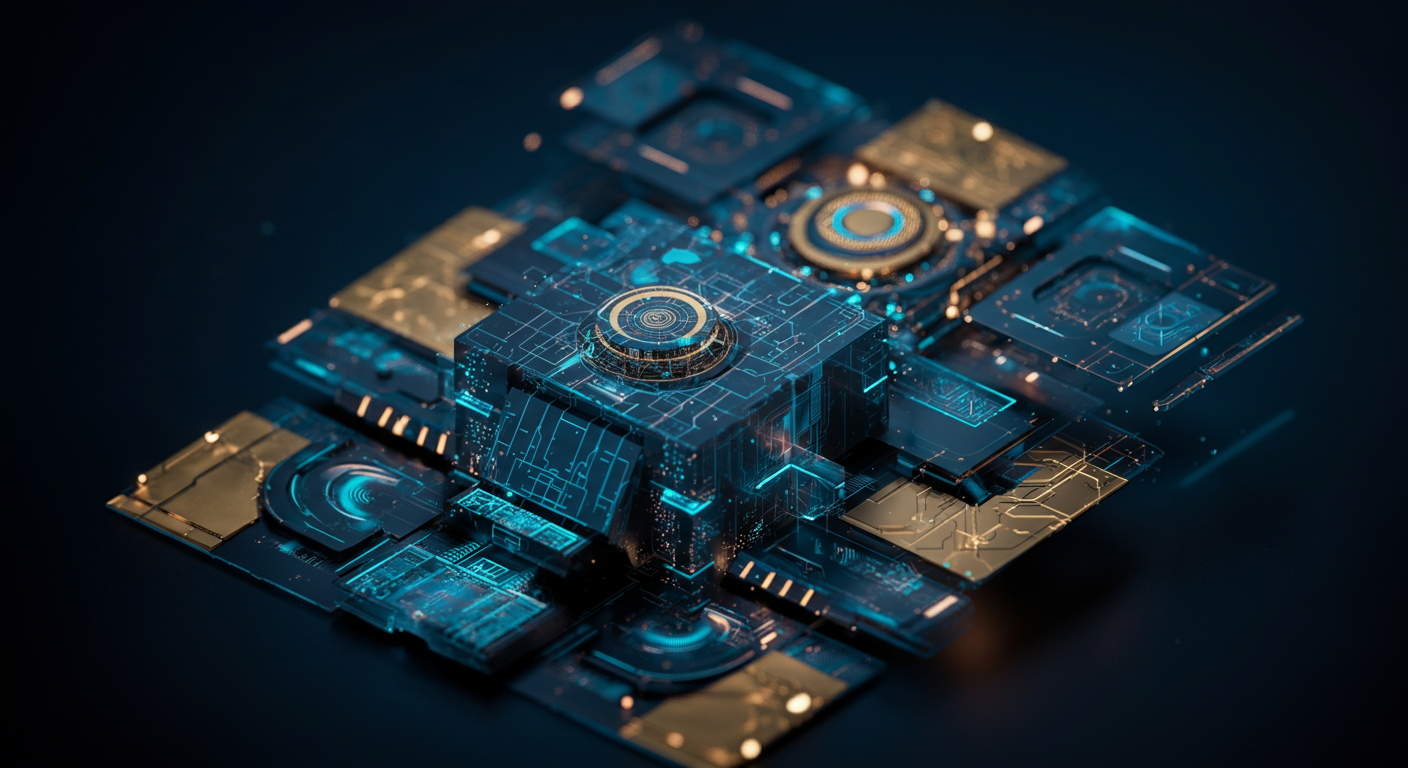GPU vs TPU: A Comprehensive Guide to Training Large Transformer Models

Here's the lowdown on the hardware powering our AI dreams, specifically when we talk about training those massive transformer models that are changing… well, everything.
GPU vs TPU: The AI Hardware Showdown Explained
Think of GPUs (Graphics Processing Units) and TPUs (Tensor Processing Units) as the power plants of modern AI. We’re talking about specialized hardware, AI accelerators if you will, built to handle the mind-boggling calculations required to train complex models like ChatGPT.
Why Do We Need Specialized Hardware?
Simple. CPUs, while versatile, just aren’t cut out for the repetitive matrix multiplications that underpin deep learning. GPUs, originally designed for graphics rendering, proved much more efficient at these tasks, acting as the original AI workhorse. But as models got bigger and more complex, even GPUs started to show their limits, hence the rise of the TPU.
TPU: Google's Secret Weapon
"The difference between a GPU and a TPU is like the difference between a general-purpose wrench and a custom-built socket wrench for a specific bolt."
Developed by Google, TPUs are custom-designed AI accelerators. They’re optimized for the specific needs of tensor-based computations, giving them an edge in terms of speed and efficiency, especially when training large transformer models. Specialized AI hardware is increasingly important in our current AI landscape, with tools like the Prompt Library now available.
In the following sections, we'll dive deeper into the architectural differences and performance characteristics of GPUs and TPUs to help you navigate this crucial decision for your AI projects.
Alright, buckle up, future innovators – let’s talk about what really makes these AI systems tick.
Architectural Deep Dive: How GPUs and TPUs Work Their Magic
Turns out, the silicon under the hood matters a lot when you're wrangling massive transformer models. Think of it like this: a Formula 1 car and a freight train can both move things, but they're optimized for very different tasks.
GPU Architecture: General-Purpose Power
Graphics Processing Units (GPUs) are the workhorses of AI, especially for training. GPUs like those from NVIDIA, are designed with:
- Streaming Multiprocessors (SMs): Think of these as mini-brains doing calculations in parallel.
- Memory Hierarchy: Fast, on-chip memory for quick access to data, and slower, larger off-chip memory for everything else.
GPUs were initially built for graphics, but some bright spark (probably a lot like me, actually) realized they could be repurposed for AI. You might use Design AI Tools that use GPUs under the hood, for example, when generating complex images.
TPU Architecture: Matrix Multiplication Masters
Tensor Processing Units (TPUs), developed by Google, are built from the ground up specifically for deep learning. Their design is all about maximizing speed and efficiency for tensor operations.
- Matrix Multiplication Units (MXUs): These are the heart of TPUs, optimized for crunching matrix multiplications (the core operation in neural networks).
- Systolic Arrays: Imagine data flowing through a pipeline of calculations, getting processed step-by-step without stopping. That's a systolic array, and it's blazing fast.
"TPUs are like specialized tools – incredibly efficient for certain tasks, but less versatile than GPUs overall."
Core Computational Differences: Apples and Oranges (Kind Of)
GPUs are great at general-purpose parallelism. TPUs are specialized for matrix math. Think of it this way:
- GPU: An adaptable power tool, you can use it for a wide range of tasks.
- TPU: A laser-focused machine. It excels at doing one thing exceptionally well.
Memory Bandwidth and Latency: The Bottleneck
Memory bandwidth (how much data you can move) and latency (how quickly you can access it) are critical. TPUs generally have higher memory bandwidth than GPUs, allowing for faster data transfer. However, the lower latency of GPU memory can sometimes give it an edge in tasks that require frequent, small data accesses.
Performance Variations: Picking the Right Tool
The ideal choice depends on the task. If you're building something like ChatGPT, or fine-tuning Design AI Tools, consider TPUs and the associated cost benefits. If your needs are more general-purpose, start with a solid GPU setup.
Ultimately, it’s all about choosing the right tool for the job, future innovators. Now, let's get to the practical side.
Harnessing the full potential of large transformer models demands a serious look at the hardware options: GPUs or TPUs, which reigns supreme?
Performance Benchmarks: GPUs vs TPUs in Transformer Model Training
The quest for optimal performance in training massive transformer models boils down to a showdown between GPUs and TPUs, with bragging rights determined by metrics like training time, throughput (samples per second), and hardware utilization.
GPU vs TPU: The Contenders
Let’s size up our contenders:
- GPUs: NVIDIA's A100 and H100 GPUs are powerhouses, favoured for their flexibility and mature software ecosystem. CUDA (Compute Unified Device Architecture) gives developers a high-level interface to program GPU intensive tasks. They offer broad compatibility and are generally easier to integrate.
- TPUs: Google's Cloud TPUs (v3, v4, v5e) are custom-designed ASICs (Application Specific Integrated Circuits) optimized specifically for deep learning workloads. Google designs TPU's to accelerate machine learning workloads, so they can handle large matrix multiplications effectively. They excel at large batch sizes and distributed training.
Metrics that Matter
- Training Time: TPUs often show faster convergence times, especially with extremely large models.
- Throughput: Measure the samples processed per second; crucial for gauging the efficiency of data pipelines.
- Utilization: Monitoring CPU and GPU activity during training allows you to spot bottlenecks.
Model Size and Parallelism
Model size, batch size, and data parallelism play significant roles. Larger models benefit more from TPUs due to their specialized architecture. Frameworks like TensorFlow and PyTorch enable scaling training across multiple GPUs or TPUs via distributed training. TensorFlow is an end-to-end open source platform for machine learning and PyTorch is an open source machine learning framework.
Ultimately, the "best" choice hinges on the specific model, dataset size, budget, and engineering resources available. For researchers pushing the boundaries of AI, exploring TPUs is increasingly essential.
Here's how to keep your AI training costs from becoming a black hole.
Cost Analysis: Balancing Performance and Budget
Navigating the world of GPU vs. TPU for training large transformer models boils down to smart financial decisions – and understanding the trade-offs. Think of it as choosing between buying a super-efficient car (TPU) or renting a fleet of less efficient ones (GPUs) for a long road trip.
Hardware vs. Cloud Costs
- Upfront vs. Operational: GPUs can be bought outright, incurring a large initial investment. Cloud TPUs, accessed through platforms like Google Cloud, involve ongoing operational costs.
- Cloud Instance Pricing: GPU cloud instances (e.g., AWS, Azure) vary in price based on GPU type and instance configuration. Similarly, TPU pricing depends on the pod size and usage duration.
- Power Consumption: GPUs can be power-hungry, impacting electricity bills. TPUs, often optimized for specific workloads, can sometimes offer better energy efficiency.
Strategies for Optimizing Cost Efficiency
- Spot Instances and Autoscaling: Using spot instances (for GPUs) or preemptible TPUs can significantly reduce costs, but be prepared for interruptions. Autoscaling ensures you're only paying for what you need.
- Model Compression: Techniques like quantization and pruning reduce model size and complexity, enabling faster training on less expensive hardware.
- Right Tool for the Job: Use ai-parabellum-openai-pricing-calculator to help manage AI costs. Understanding the optimal tool for each task will allow for the most efficient allocation of resources.
Real-World Examples & Development Time

Consider these scenarios:
| Scenario | Potential Hardware Choice | Cost Savings Strategy |
|---|---|---|
| Prototyping a small model | Single GPU | Leverage a local machine to minimize initial expenditure. |
| Training a large model | Cloud TPUs | Utilize spot instances with checkpointing to tolerate interruptions and save on compute costs. |
Don't forget the cost of your time! Developing on Software Developer Tools such as familiar GPU environments might be faster than adapting to the TPU ecosystem initially.
Ultimately, weighing the upfront, operational, and developmental costs helps you make the most informed choice. And remember, staying updated on the latest hardware and optimization techniques is key to keeping your AI budget in check. Next, let's dive into specific performance benchmarks...
Here's the deal: the hardware is only half the battle when training large transformer models; you need the software to wield that silicon effectively.
The Software Ecosystem: Frameworks, Libraries, and Developer Tools
The deep learning frameworks, libraries, and developer tools surrounding GPUs and TPUs are key to harnessing their raw power. Think of it like needing the right wrench to tighten a bolt on a complex engine.
Deep Learning Frameworks: The Foundation
- TensorFlow: This powerful framework, developed by Google, has strong community support and a wide range of tools, which you can find within Software Developer Tools.
- PyTorch: Favored by researchers, PyTorch offers a dynamic computation graph that makes experimentation easier.
- JAX: Another Google product, JAX shines in scientific computing and offers automatic differentiation. Its growing popularity is hard to ignore.
Libraries: Accelerating Performance
CUDA and cuDNN are essential for GPU acceleration:For TPUs, you'll often interact with libraries optimized for their architecture, but many of the underlying concepts remain the same.CUDA gives you the tools to utilize the parallel processing power of NVIDIA GPUs, while cuDNN provides highly optimized primitives for deep neural networks.
Porting Code: Bridging the Gap
Moving code between GPUs and TPUs can be tricky. GPUs offer more general purpose programmability, while TPUs are optimized for specific workloads. Consider the following:
- Hardware Abstraction: Abstracting hardware differences can streamline porting.
- Performance Tuning: Profiling and optimizing code is crucial for performance on either platform.
Future Trends: What's Next for AI Hardware?
The relentless march of AI progress demands increasingly sophisticated hardware, and the future promises some electrifying innovations. Forget just GPUs vs TPUs – the landscape is set to become far more diverse.
Emerging Hardware Paradigms
- AI Accelerators: Custom-designed chips are gaining traction, optimized for specific AI tasks like image generation or natural language processing. Think of them as specialized tools, honed for a specific purpose versus a general-purpose swiss army knife.
- Neuromorphic Computing: Inspired by the human brain, these chips use spiking neural networks to process information in a fundamentally different way, potentially leading to massive gains in energy efficiency. They aim to replicate the density and efficiency of biological systems.
"The true sign of intelligence is not knowledge but imagination." - Yours truly, (hypothetically) back in the day.
The Impact
These emerging trends are poised to shake up the GPU vs TPU dynamic. TPUs are currently specialized for Google's workloads, so new specialized AI accelerators could make similar architecture available and cheaper to the broader market. Neuromorphic and quantum computing could create entirely new playing fields.Hardware-Software Symbiosis

The future isn’t just about hardware. It’s about how hardware and software work together.
Co-design: Optimizing both the hardware and software simultaneously* will become essential for achieving peak AI performance. For instance, you could get custom instruction sets to accelerate key parts of a model. Edge Computing: As AI spreads into embedded systems and IoT, we'll see increasingly sophisticated solutions for training and inference at the edge,* minimizing reliance on centralized servers. Imagine real-time processing directly on your phone, without sending data to the cloud.
We also have to consider how more powerful AI hardware will require ethical and privacy considerations. The potential benefits of faster AI development must be balanced with potential risks, to avoid the ai-news that may arise.
In conclusion, the future of AI hardware is bright, diverse, and a bit wild. Keep your eyes peeled, because the next breakthrough might be just around the corner – and likely powered by something you've never even heard of yet. Maybe we'll see the rise of new categories within the best ai tools.
Here's your guide to GPU vs. TPU for training large transformer models, crafted for today's AI professionals.
Choosing the Right Tool: A Practical Guide for AI Practitioners
Navigating the hardware landscape for training large transformer models can feel like threading a quantum needle, but understanding the core differences between GPUs and TPUs can illuminate the path forward.
GPU vs TPU: Key Strengths
- GPUs (Graphics Processing Units): Excellent for general-purpose computing and widely available, GPUs excel at parallel processing, making them ideal for a variety of AI tasks, including image generation and video editing. They are flexible and adaptable, supported by extensive libraries and frameworks. Think of them as the Swiss Army knife of AI hardware.
- TPUs (Tensor Processing Units): Designed specifically for neural network workloads, TPUs offer superior performance when training large models. TPUs excel in matrix multiplication, a fundamental operation in deep learning. Consider them a specialized race car optimized for a particular track.
Decision Tree: Selecting Your Hardware
Question 1: Is your workload heavily focused on matrix multiplication and deep learning specific tasks? - Yes: Consider TPUs. - No: Evaluate GPUs. Question 2: What is your budget? - High: Both GPU and TPU options might be available. - Low: GPUs often offer more cost-effective solutions, particularly for smaller projects. Question 3: What is your priority? - Flexibility & General Use: Use GPUs
- Maximal Performance: Use TPUs
Experimentation is Key
Ultimately, the best way to determine which hardware is right for your needs is through experimentation and benchmarking. The Top 100 AI Tools can give you ideas of solutions to test.
As AI continues to evolve, specialized hardware like TPUs will become increasingly important, but GPUs will remain a versatile and accessible option for many practitioners. The future of AI hardware is specialized, but experimentation and continual learning are key.
Keywords
GPU vs TPU, GPU TPU difference, Transformer model training, Large language models hardware, AI accelerator comparison, Deep learning performance, TPU for machine learning, GPU for machine learning, AI training cost, Cloud TPU vs GPU, Best GPUs for AI, Best TPUs for AI
Hashtags
#GPUvsTPU #TransformerModels #AIHardware #DeepLearning #MachineLearning
Recommended AI tools
ChatGPT
Conversational AI
AI research, productivity, and conversation—smarter thinking, deeper insights.
Sora
Video Generation
Create stunning, realistic videos and audio from text, images, or video—remix and collaborate with Sora, OpenAI’s advanced generative video app.
Google Gemini
Conversational AI
Your everyday Google AI assistant for creativity, research, and productivity
Perplexity
Search & Discovery
Clear answers from reliable sources, powered by AI.
DeepSeek
Conversational AI
Efficient open-weight AI models for advanced reasoning and research
Freepik AI Image Generator
Image Generation
Generate on-brand AI images from text, sketches, or photos—fast, realistic, and ready for commercial use.
About the Author

Written by
Dr. William Bobos
Dr. William Bobos (known as 'Dr. Bob') is a long-time AI expert focused on practical evaluations of AI tools and frameworks. He frequently tests new releases, reads academic papers, and tracks industry news to translate breakthroughs into real-world use. At Best AI Tools, he curates clear, actionable insights for builders, researchers, and decision-makers.
More from Dr.

